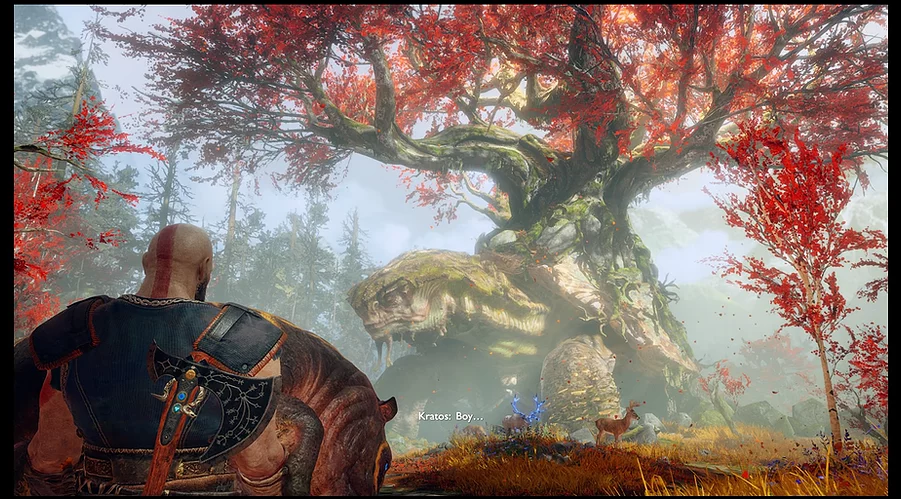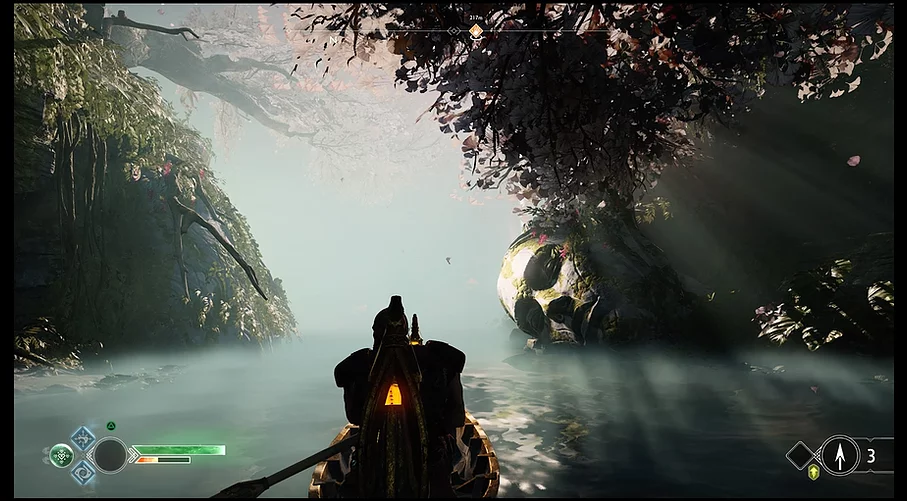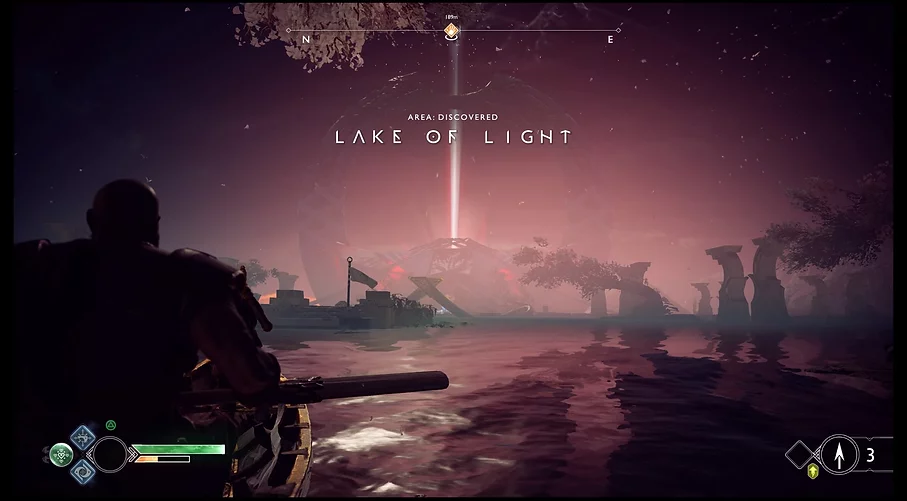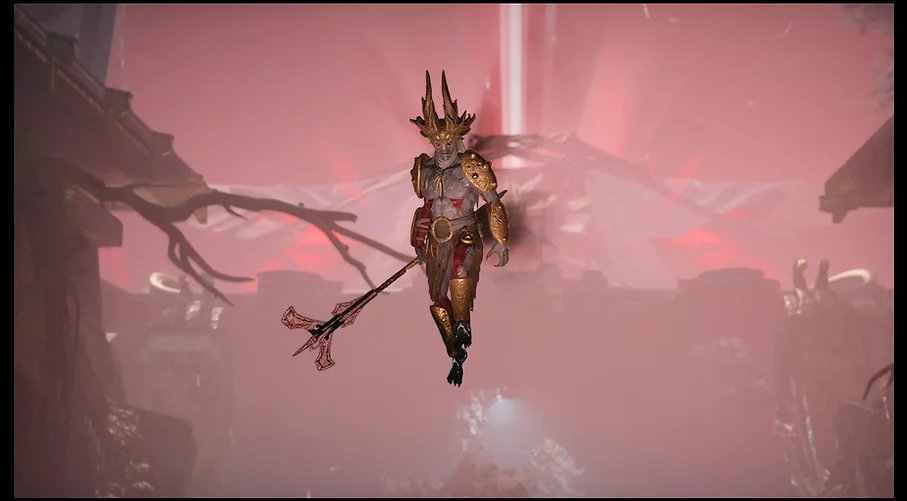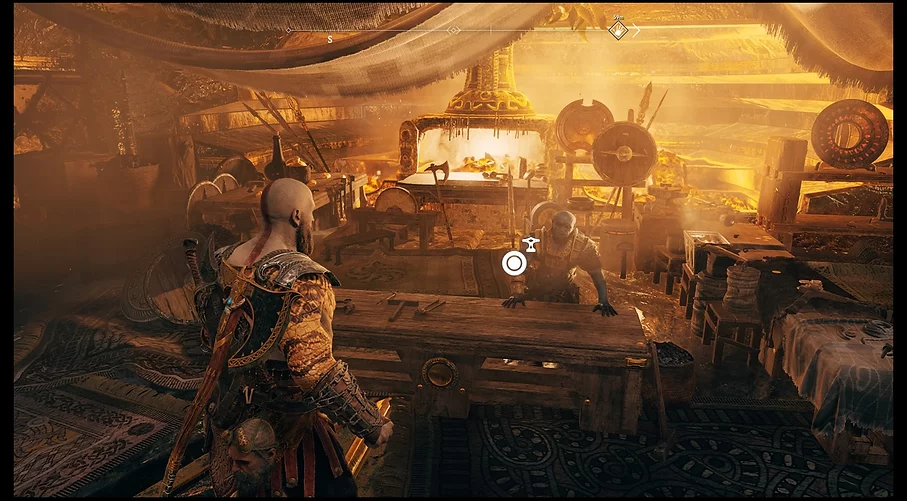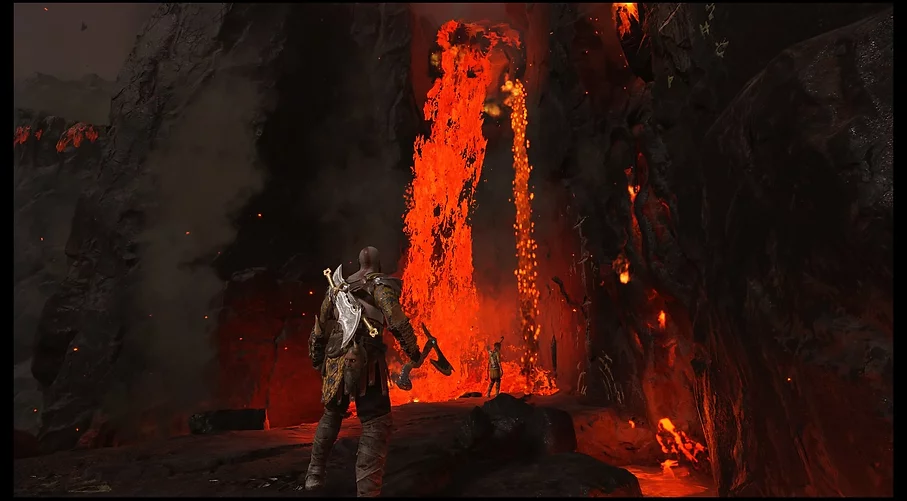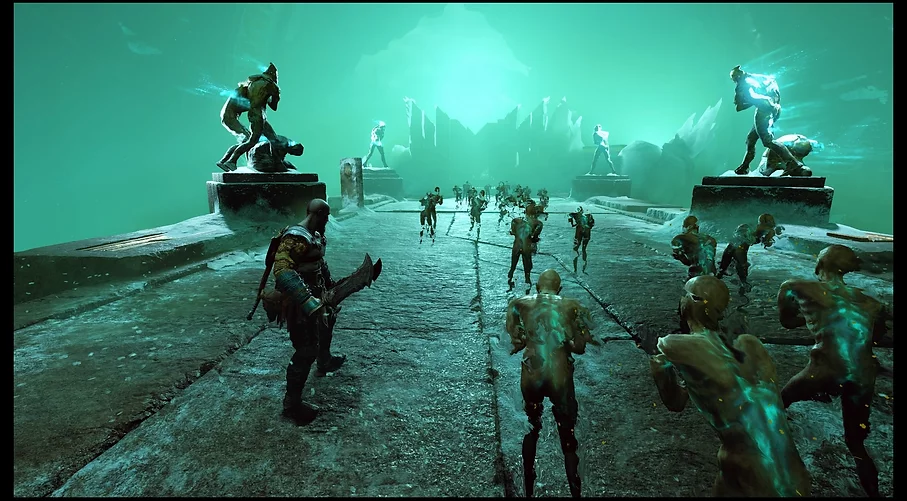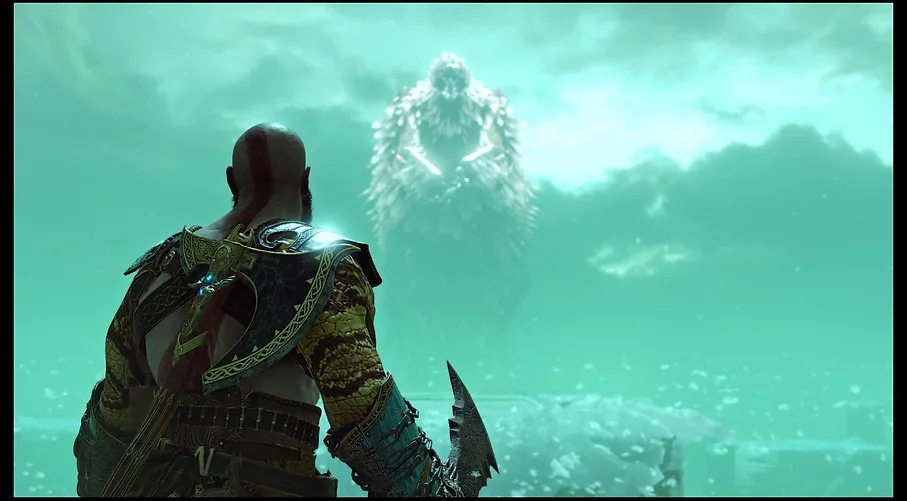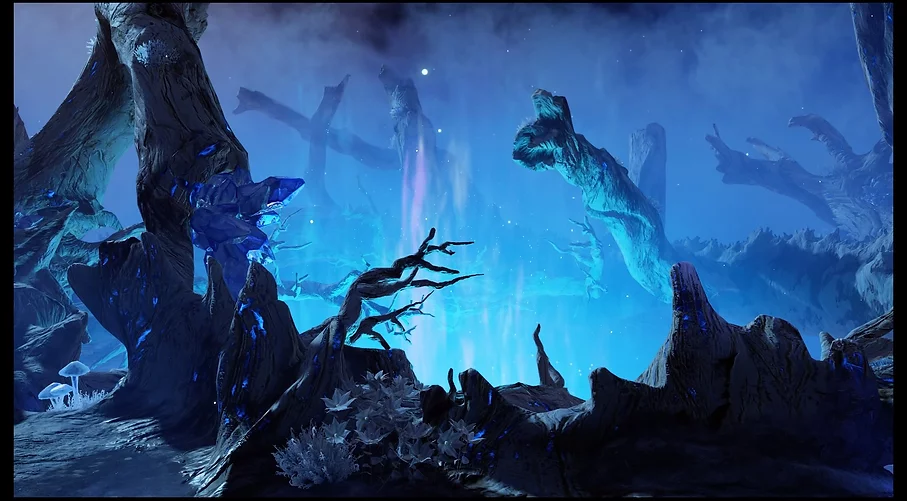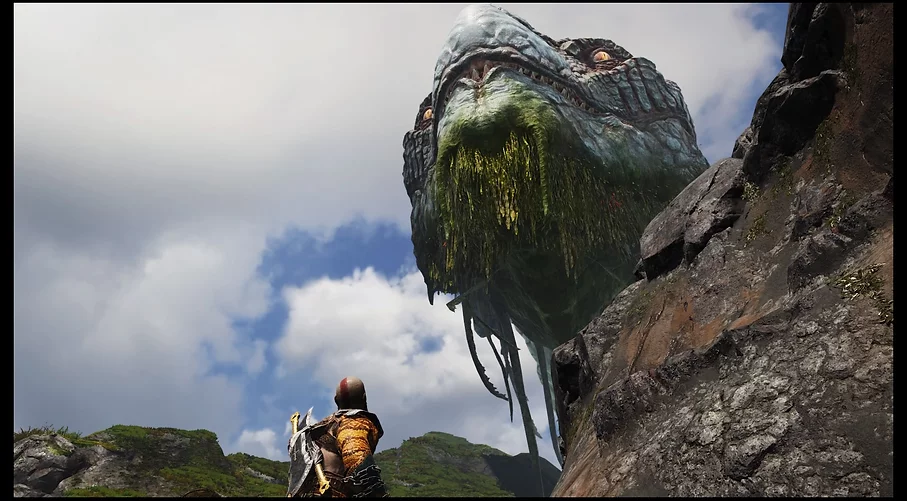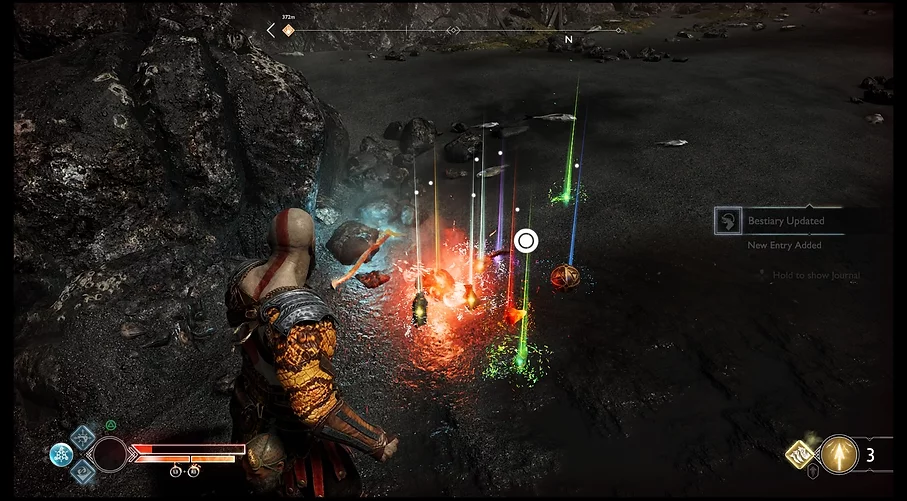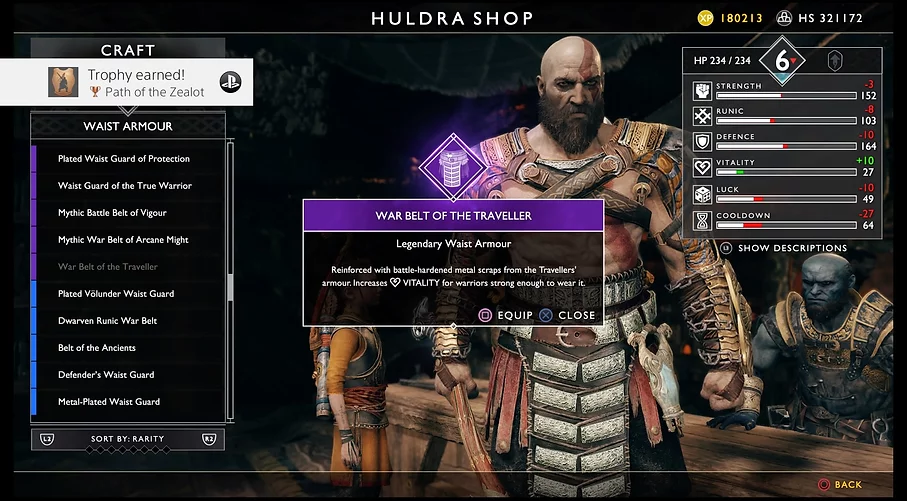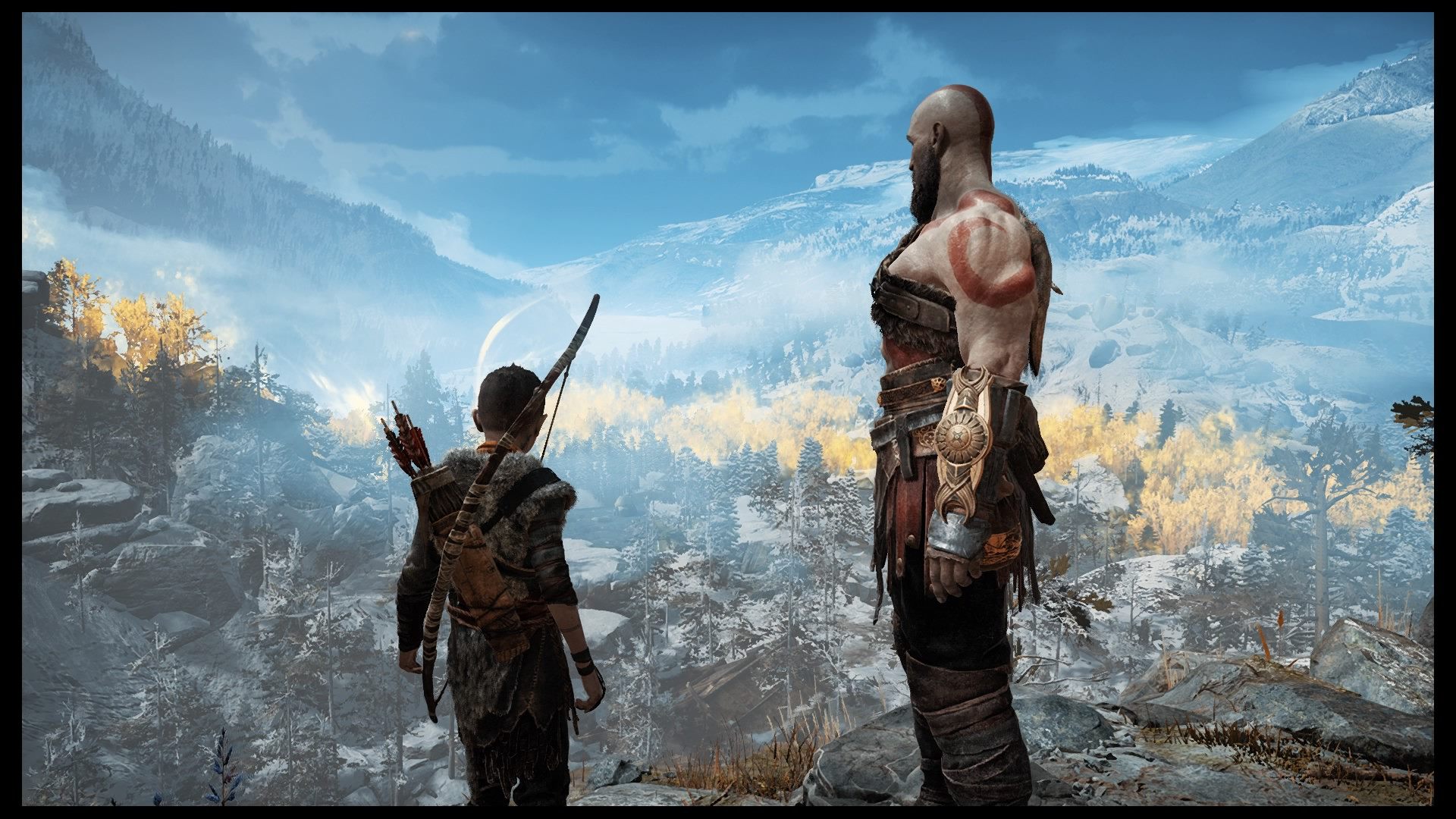
God of War (2018)
Platforms: PlayStation 4
Review date:
Emoji summary: 👨👦🏔🌠
Review by: GDLP
Spoilers: description of places in the game visited, some character development is laid out, a little on plot but only in reference to characters and places and detail is held back. Description of what gameplay allows. Trying to write in a way that still might push people to play it for themselves but also is involving for those who have. A tightrope honestly. lesssget into it:
*VIDEO VERSION CLICK HERE*
There was a tweet chain going round last week asking people to post images of 4 games that fill them with joy. I love that phrase, to be filled with joy. It is palpable, rising. It was an easy tweet to take part in because that feeling is bound to games for me. If it had been visual arts, I don’t know what I would have said though. With games, I am finding that even when the story, style or task isn’t markedly happy, there’s always a fairly high base level of joy in the activity itself; and I can’t say the same about looking at art in galleries, which has always been vaguely tense. I’m coming to this point in my role as a critic where I’m having these huge waves of emotion and yeah, enjoyment, all in a tumbling release because of this shift in my writing from exhibitions to games. The way I feel when I sit down to play something is a world and range away from the containment of the exhibition experience, where any emotion felt there is mannered. It is almost always a blank face situation, nothing; my reactions are lived out in silent astral projection between my eyes, if at all. But whether it’s Fall Guys or Shadow of the Colossus, I have this physical, vocal enjoyment that follows through to a more demonstrative sadness, surprise, fear, anger or whatever it is that rolls through me. And in sidestepping to game reviews from art, all of these notes are coming through to my writing and general conversation - like, I’m so excited that I want to make game friends, have people over for the evening and I want to talk about this stuff for hours. I want to write thousands of words pushed along by all of this joy so we can share in this thing we’ve decided to hold onto from childhood; the toy box is big and visible next to the TV, and we open it up every few days or so to see what’s inside. Like, we really decided to keep having fun, didn’t we. I don’t know what people who don’t play games are doing with themselves, and I don’t know why anyone would insist on going to a gallery when consoles and computers exist.
I can’t say I’ve never enjoyed fine art but it’s like I’m coming out of a relationship I settled for; now, it’s a co-op with this other form that brings something new out in me but also offers quality time, memories, experiences, and this strange existential confirmation that I’m still trying to articulate to myself. I guess it’s because when you’re playing a game one-on-one over the course of an hour or even fifty hours, you have a hand in what is happening and so you are constantly producing the game whilst the game is constantly producing you (in the figure of the player, its author and driver). The design of games means that relationship is often rewarded, guided and soothed. The game is heady-empty-off until the player brings it to life; whereas art is the tree that falls in the forest when no one is around to hear it, still falling and still making a thump. Looking back at all the exhibition reviews I’ve published over the years, I do think: wow, exhibitions are just strange arrangements of art in rooms that we go to and confront alone. For me, it’s often been painfully one-sided, and the pain is in trying to match up to the art somehow as a visitor, or behold it in the correct way without knowing what’s right. The more I think about it, the more I feel that actually, games make art look dead and still. They have art in them but that art is wrapped around some energy from all the potential consequences that could occur from playing. Generically speaking, art is a thing you look at and games are rulesets we interact with. That ruleset might mean agreeing to some things you’ve learnt before handling the chess pieces on a board, or it could involve avoiding the floor of a playground because you’ve decided the floor is lava. Rules could be spoken through and against out loud at a tabletop with other people, or they could be compounded with images, words and sound on a screen, powered by a computer, and called a video game. Its form is multi-faceted and ever-changing and in that moving, sounding, elastic shape, I can find so many footholds. Maybe this access is why I can enjoy it in the first place. Maybe this is why I think games are so much more fun, because they let me enjoy them - they actually show me how.
For the tweet that asked for 4 games that fill you with joy, I posted my reply with the following: Heave Ho (my favourite thing to play with my cousins), Tetris 99 (online battle royale, addictive and rewarding), Untitled Goose Game (chance to be a rascal with a beautiful soundtrack) and the fourth image I added was God of War, which is the subject of today’s review. I loved it. I really loved it, and in such a big way that, yeah, has made me reflect on how art has never taken me this high. God of War was developed by Santa Monica Studio and released in 2018, and it is an epic tale in which a father and son journey to the highest point in all the nine realms to spread the ashes of the boy’s mother, Faye, as was her final wish. The dad, Kratos, hasn’t been too present in Atreus’ life so this story is also them getting to know one another, in a tale populated by figures from Norse and Greek mythology. Loved it, and I am framing this week’s text with good vibes threaded through all the words I can so that you can feel just an inch of the enjoyment I felt from playing - this was one of those ‘going to go for a wee and then run right back’ games like birthday-party-happiness and not wanting to be anywhere else at all. When I finished it this weekend, I could not believe the fun was over, and I watched a documentary about it and listened to 3 podcast episodes. I even had a video call with a new game friend I met on twitter so that I had someone to fangirl with and we’re calling each other again after I’ve posted this review. It was so good.
The story lifts off right from the starting screen where Kratos is stood beside a tree marked with a gold handprint that Faye had touched herself, identifying it for the funeral pyre she would be cremated on. Kratos’ image is stark. His skin is almost grey and it has a thick red line that crosses his chest, back, down the middle of his head and then cuts left over one of his eyes; permanent war paint on his body. He’s always frowning, bearded, and his muscles are huge and exposed; he wears leather and fur in buckled pieces around his body with metal armour over one shoulder - and Atreus is tiny in comparison. He must be 10 or so, pale, a little sad-looking, and wrapped in furs for the cold. After the cremation, Kratos and Atreus travel through the wildwoods and start to make their way to the mountain where they will be spreading Faye’s ashes at its peak. But this game is a snakes and ladders attempt to get to where they need to be. Midgard is where we start and it is like a centralised image of raw Scandinavian fields and glaciers. There are volcanic beaches, plenty of waterfalls, and the lake in the middle is bordered by hills - a little like Bergen in Norway. Midgard is filled with the living, the dead, and the World Serpent - a snake with a titanic body who lies in wait, water dripping from his mossy chin. He speaks in rumbles when he is called to attention, and when he doesn’t, he blends into the mountains he rests over and under. The documentary on this game, Raising Kratos, films some of the production team in Iceland studying the nature there. I could have guessed that. I visited a few years ago and it completely stands out as a cold moon-land filled with magic stories of its own, the perfect backdrop for the old tales of a story like God of War. It was pretty cool to re-visit Iceland through a game from the comfort of my still-locked-down life.
But Midgard is only the beginning. God of War is about 20 hours of core story while we ride this runaround through icy mountains and caves and then onwards through different worlds entirely. This game does not sit still, it explodes. Kratos uses the Bifröst, a translucent key that absorbs elven light, so that he can travel between realms through a central temple. And this is the best thing. It is a buy one get 9 free deal on detailed and dramatic shifts in landscape design as we fly through time and space. There’s also something in the anachronism of completely make-believe God-figure, who has rune magic but no electrified technology, zooming through blue line geometry to get to another ancient realm; I like the alignment of these aesthetics because it’s like seeing behind the magic, even though none of this is real or replicable. It all builds up the fiction anyway. So we go on to these realms - and they are not half-arsed places. You go to Muspelheim - a crater on fire that has lava dripping down rocks like hot waterfalls. Every corner fills with black shadow vignettes as you walk through it. Nilfheim lies under a dark haze too, pierced only by thorny red bushes; and in Jotunheim - the land of the giants - colossal statues of men and women can be seen lying against mountaintops right above the clouds. There are some realms we hear about but cannot get to: Asgard, Vanaheim and Svartalfheim; and we go all the way to Hel, where we pass a procession of ghosts who march under a bright mint light and tempest. In Helheim, the dishonourable dead (those who did not die for heroism) cower as they walk against this invisible gust that even the statues along the bridge are leaning into. It is cold and hard all over.
These places all are made whole by the art and the writing that support them; the language around the Vanir and Aesir tribes, of Valkries, Völunder Mines, and ravens that Odin has sent down to spy on all that takes place. You fight Revenants, Soul Eaters, free Dragons, wears mythic war belts and golden talismans of protection. Mythology holds them together. And the joy is in literally looking and moving through pure impossible lands that are so detailed you still feel like you could go there. My favourite realm, and the only one I haven’t mentioned yet, was Alfheim, the kingdom of the light and dark elves. Imagine paths shaded with cherry blossoms under an ever-starry night; imagine huge gold statues of warriors who line the path, or whose faces lie still above the water where they have fallen. There is this soft pink luminescence everywhere, and vines and lilac buddleia pattern the walls in all directions. Everything is symmetrical, and there are glass ceilings held up with grand lattice curves that scatter the light softly as it shines in from above. Alfheim was beautiful but it had the same edge that mermaids in fairytales do: the dark elves had sharp claws, armour with horns, and tridents they thrust forward like lances as they flew through the air to get you. And I loved it. This place could have been a whole game in itself but God of War is a ride through so many atmospheres, they go on and on and on. Hopefully, if we’ve all been good this year, the few realms we could not get into will be the locations of a likely sequel. Let’s see.
And so you have these incredible backdrops for Kratos and Atreus’ mission - all these places to be amazed at - and still, the thing I will remember most about this game is the way these two come together and come to love each other over the course of the story. At the beginning of the game, they are in this awkward, sort of formal, biological relationship where Kratos orders him around, addressing Atreus only as ‘boy.’ There’s no physical or emotional contact in words or touch. There are moments where we see Kratos almost go to put a hand on the boy’s shoulder but he stops himself in this sad dramatic irony because of his hard nature and because he’s just not ready to. Atreus has to take every comment on the chin, but he does try to coax some speech out of his dad - stories if he’s lucky, anything about the Gods, his mother, anything meaningful at all. As the game goes on, they spend more time with one another, and Atreus comes into his own as a powerhouse of knowledge that genuinely helps them on their quest. He can read what Kratos can’t; plus he’s a part of every battle, running round with his bow and arrow, knocking down baddies. They start to get familiar with one another but it is still not quite there, like something needs to break the ice, and then all of that comes to a head in the middle of the game when Atreus gets sick. Kratos goes on a crazy mission to save him and it is one of the most serious and eloquent sequences in any game I’ve played. It was so intense to watch and play because his struggle to save his son comes with this new, obvious desperation as Kratos wants to save his young kid - all for a love he hasn’t been explicit about because, you know, maybe it wasn’t completely there yet - not until he realised what he gained to lose. After, everything starts to change. There is honesty between them, shared experiences they can already reflect on, and a real bond for them finally. Kratos places a hand on Atreus’ back every now and again, and at the very end of the game, he finally calls him ‘son.’ It is a lot in itself but for me it is also underlined by two comments in the God of War documentary. The first is that the director Cory Barlog references his own life in the making of this game because he had become a father himself and felt a change of perspective too. The second is from Christopher Judge, the voice and motion-capture actor for Kratos. Judge says that for a good 10 years he was always working and wasn’t present for his own kids growing up, and this role has become a love letter to his children as well as an apology.
All of this is heart-warming, right? Except, I do think I’m coming to this game from a sort of amazing advantage. I am so late to it all that I didn’t know the 2018 God of War release was the 11th in a series. It is a reboot with a few inherited bits and pieces of story but I feel lucky because I know some players, especially women, have been put off buying anything from this studio due to the past characterisation of Kratos as a freewheeling, killing, shagging, slayer-man. This is why Cory Barlog’s move for Kratos to a budding dad is such a headline. And I have seen sort of mad critique by some that has stated that because there is no real bridge between old Kratos and the new latté papa with an axe, he has been granted a sudden forgiveness for his bad past that might make toxic men playing feel that they too can skip right to their own absolution. I get wanting a clearer line from A to B, and maybe they’ll make a prequel. But I would hope players are not stupid enough to absorb the broken piece’s of a character’s development to excuse their own shit. It’s weird. The protagonist I got to know was actively nuanced, constantly reflecting on what he had done and desperate to imbue better values in a son that promises a better future for them both, so I don’t know. I’m glad I can enjoy the game for what it is without the burden of what it used to be, and it sounds like that’s a privilege in this instance.
Now, I started this entire text by writing on games as a more enjoyable form of art than the flat stuff in galleries but so far all I’ve actually spoken about is the art in the skin of God of War across its landscape and story. I almost think I’ve left it this late in the review to get into gameplay because I am still holding onto this responsibility of wanting the readership we built from exhibition reviews to follow along with this new era of The White Pube - it gives some level of accessibility by keeping it art-chat up front, and then maybe eases people in to games now that I definitely have an agenda to get everyone I know to start playing stuff. But let’s do it, because I’ll remember God of War for the story and I’ll love it for the places it took me but I think it has become my favourite game because it made every single game mechanic I enjoy available to the player. It’s hard to get a tight definition of game mechanics pinned down quickly because it seems to mean so many things, but here I’m referring to what it is you can do in the game and the consequences of doing those things. The features, the furnishing, the booby traps, the fun. All my favourites were in there, packed tight into a single adventure. I was delighted.
So like, the game gifts you so much, so often and some of it is in loot from enemies which leave behind bounties like piñatas, but there are millions of treasure boxes around the map with even more presents to collect. Some of these chests are locked shut and you have to solve a puzzle or break seals hidden around on walls in order to crack them open. Love this, love having to work for it. Plus, areas have treasure maps so off the back of the main quest, there’s exploration to play towards. Once you find all the random artefacts in one site (Atreus’ lost toys round the back of the starter house for example) you can get a little XP and satisfaction as a treat. The items in God of War can be used to power up weapons and you can take raw materials to the shop where the blacksmith will craft armour which I love from my Runescape days - piecing together a recipe so you can have a new item on the menu. I do fundamentally enjoy the fact there’s a shop too, a currency and money to be taken from the monsters you kill to spend on new shiny things. This also means that, tick, you can customise your characters in a sense by changing the clothes. Thank you, God of War. You have stats for strength, defence, vitality, luck and so on, and you can bump up your level by getting better armour or by drinking Yggdrasil's 12 dews to increase the base stat permanently. I love numbers in games like this, when they are all set out in front of you and you know what you need to work on. Similarly, God of War has XP to be collected from missions and enemies which can then be spent on a skill tree to broaden the fighting, actively and visually. The combat was excellent. It had depth and often meant balancing plates because as you fight, you can simultaneously direct Atreus to shoot arrows at the surrounding enemies. The controls were really varied and there were chains of clicking things in the right order to produce dramatic combos. You had to keep an eye on the type of enemy so you could act accordingly. Swap between the axe and Blades of Chaos; whack the axe or throw it; use skills or runic attacks; block, parry, rush, and lots of rolling dodges. It was thrilling.
And this was all happening within a world of mythology which the games takes time to educate you on. You add lore to your journal as you hear it in conversations with other characters or find it on painted boards and walls around the game. I learnt so much. And finally, not so much a mechanic but some of the pleasure I reaped was in the level design. Remember that lake I described with the World Serpent who’s big and sunken all around it? At certain points in the story, when you are ready, he moves and displaces the water so that the level drops to reveal new areas on the map. It is such a grand and almost natural reveal, this real marrying of story and gameplay, and I really liked the way it was done. On a similar note, love to be playing a game, get a new ability or weapon, realise what it can do and remember there’s this one door from the beginning of the game that you can get into now, etc. Love keeping all those dead-ends in mind and waiting for the missing key. Reminds me of getting the Cut HM in Pokemon and rushing back to that one crispy tree you couldn’t get past, where you could spot a pokeball on the floor behind it. That joy is hardcoded into my game-playing-brain. I like tying up loose ends and tidying up the game. So, everything. Every single thing was in there. Where do I even go from here?
I know these mechanics aren’t unique and there are other, fuller open world games that do as much or more, but God of War is a holy trinity for me now of favourite gameplay, story, and art. Spoilt. It is all engines firing to conjure the exact genre of magic, adventure and strength that I really enjoy being a part of. The combat is the best I think I’ve performed in any game which made me very proud; the father-son growth was not mine but I was there to witness it; and the exploration we did together made me feel like I was walking through somebody else’s dreams one night and their nightmares the next. This game has enchantments through all of its design, and from the golden handprint to the ashes, there is not a single loading screen to break its spell. It was complete. You wade uphill through a fiction that is ancient and new all at the same time. It filled me with so much joy and I can’t wait to talk to other players who know this feeling well.
If you’re here at the end of the text, please comment a 🌠 emoji on our Instagram or share the text with a 🌠 emoji on Twitter
